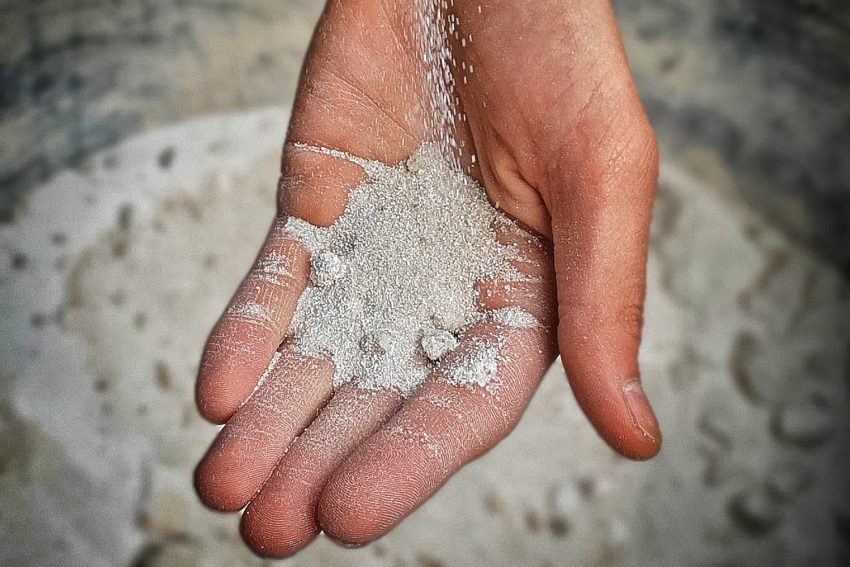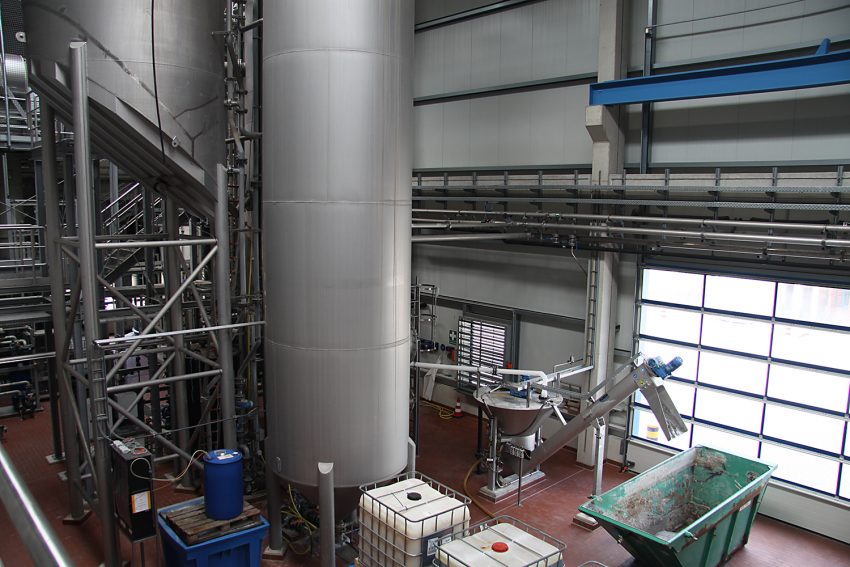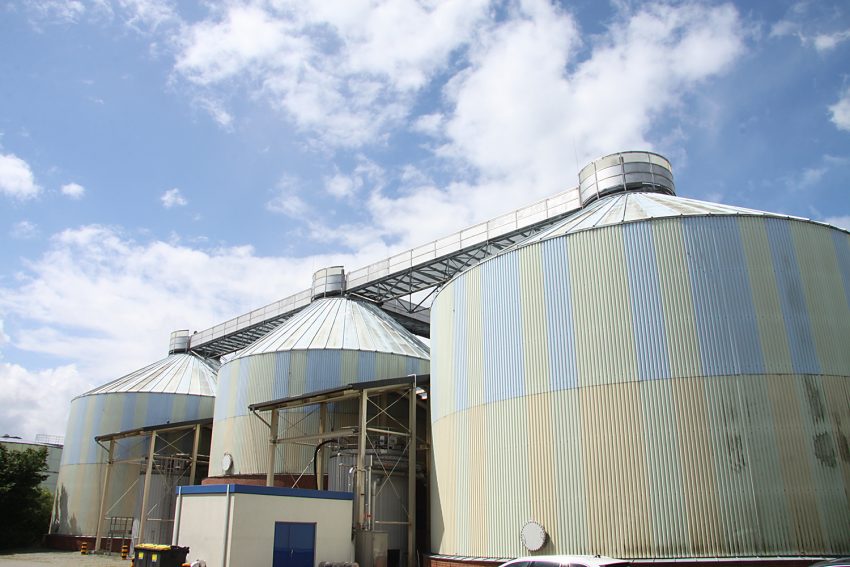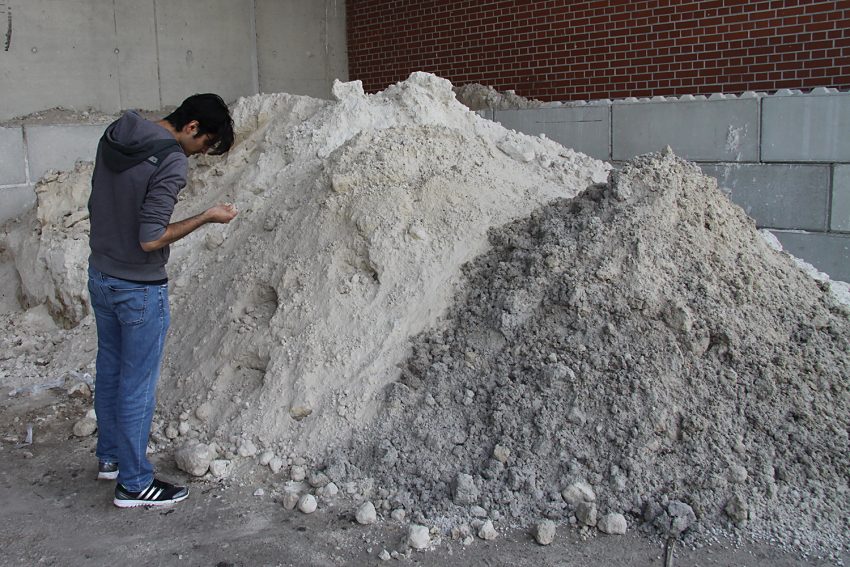Phosphorus recycling: from sewage sludge to plant fertilise Process for struvite precipitation optimised at Braunschweig wastewater treatment plant
Phosphorus is an important plant nutrient and therefore essential for food production. However, global phosphorus reserves are limited. Recovering phosphorus from wastewater and sewage sludge therefore plays an important role in securing future supplies. Technische Universität Braunschweig is promoting this recovery with its “P-Net” project. The focus is on the production of the crystalline phosphorus product struvite and the establishment of a network for phosphorus recycling in the region between the Harz and Heide mountains. The project’s first success: at the Braunschweig sewage treatment plant, the project partners are testing a process for struvite precipitation on an industrial scale for the first time, in order to achieve the recovery rate required by the German Sewage Sludge Ordinance.

Struvite from the struvite precipitation of the Steinhof WWTP, Braunschweig. Photo credit: Hooman Mohammadi, Andreas Kolb/ISWW, TU Braunschweig
Sewage sludge is not only waste, but also a rich source of phosphorus. Around 60,000 tonnes of phosphorus are contained in the two million tonnes of sewage sludge produced each year by German sewage treatment plants. This could cover around 40 per cent of the phosphorus requirement for mineral fertilisers. Until now, however, the sludge has mostly been incinerated and the phosphorus-rich ash disposed of. In some cases, the sludge has also been spread on fields as fertiliser. With the amendment of the Sewage Sludge Ordinance in 2017, the German government also reorganised recycling. By 2029 at the latest, operators of sewage treatment plants will have to recover and recycle phosphorus from sewage sludge or sludge incineration ash. Agricultural application, as has been the practice in Braunschweig for decades, will then no longer be possible.
An “operational problem” for wastewater treatment plants
This is where the joint project “P-Net”, which is coordinated by TU Braunschweig, comes in. The researchers are pursuing phosphorus recycling on the so-called struvite route. In this process, crystalline phosphorus products are produced by precipitation and crystallisation, in particular magnesium ammonium phosphate (struvite). Struvite was initially a by-product or rather an “operational problem” of wastewater treatment plants, which occurs when there are high concentrations of ammonium, phosphate and magnesium. The struvite crystals often lead to incrustations on pipes, heat exchangers and valves, among other things, and thus to malfunctions during operation. For this reason, processes have been developed to precipitate the struvite in a targeted manner so that it can be better controlled. The plant operators have already installed such processes at the sewage treatment plants in Gifhorn and Braunschweig.

The struvite precipitation plant at the Steinhof WWTP in Braunschweig. Photo credit: Thomas Dockhorn/ISWW, TU Braunschweig
The aim of P-Net is to optimise these plants. Until now, struvite precipitation has been able to recover between five and 30 per cent of phosphorus from sewage sludge. This is not enough for plant operators to comply with the legal limit of less than two percent phosphorus in the dry mass of the digested sludge. “That is why we want to upgrade the struvite line to such an extent that it will be able to comply with the requirements of the Sewage Sludge Ordinance even when operated economically in the future. This means that we are intensifying the process in order to extract as much phosphate as possible from the sewage sludge, so that the permitted limit for phosphorus in the sludge can be adhered to,” explains project manager Professor Thomas Dockhorn from the Institute of Urban Water Management at TU Braunschweig. The scientist developed such a process almost 20 years ago and had it patented at the time. Depending on the plant operation, up to 70 percent of the phosphate can be removed from the sewage sludge. Unlike other processes that recover phosphate from sewage sludge or sludge ash, this process is purely biological and requires no additional operating resources.
Using existing technology at the treatment plant
In Braunschweig, it is particularly advantageous that the existing process technology can be used for the new process stage through conversion, so that the plant operators can avoid high investments. The project partners, Abwasserverband Braunschweig and Stadtentwässerung Braunschweig, are using one of the three digestion tanks with 2,100 of the total 11,000 cubic metres for biological phosphorus remobilisation.

The three digesters for sewage sludge digestion at the Steinhof WWTP in Braunschweig. The middle one (digester 1) is currently used for biological P remobilisation in the P-Net. Photo credit: Thomas Dockhorn/ISWW, TU Braunschweig
While the previous process in Braunschweig was designed to recover up to one tonne of struvite per day, the optimised process is expected to recover around two tonnes. “This is not only great because it is a process alternative to recovering phosphorus from the ash, but also because we can use the existing plant technology,” says Thomas Dockhorn. This means that the phosphate can be recovered directly at the wastewater treatment plant and can continue to be used regionally in agriculture. This would also be a great success for the Braunschweig wastewater association. “The farmers of the Braunschweig Wastewater Association could use the P fertiliser thus obtained to replace the fertilising effect of the sewage sludge and would not have to resort to mineral fertilisers,” adds Dr. Franziska Gromadecki, Managing Director of the Braunschweig Wastewater Association, which owns the Braunschweig wastewater treatment plant.

Temporary storage of struvite at Steinhof WWTP, Braunschweig. Collection for transport to SF Soepenberg for product packaging. Photo credits: Thomas Dockhorn/ISWW, TU Braunschweig
Approved for organic farming
What remains is sewage sludge with a low phosphorus content and a product with a high fertilising effect. Project manager Dockhorn uses Struvit himself for his own plants at the institute and at home: “It is an excellent slow-release fertiliser that has at least the same fertilising effect as a conventional mineral fertiliser.” However, the white globules that the scientist applies to his plants and that are produced during the precipitation process still need to be processed for agricultural use. In this form, they are too small or too irregular to be spread on the fields with agricultural machinery. Project partner Soepenberg standardises the fertiliser and processes it into pellets. The struvite fertiliser produced is already being tested in large-scale field trials by the Julius Kühn Institute. Struvite has now also been approved by the EU as a fertiliser for organic farming.
Other plant operators are also in the process of implementing similar struvite precipitation processes on an industrial scale. The P-Net project partners recently organised an exchange of experience in Braunschweig to promote phosphorus recycling via the struvite route throughout Germany. For Professor Dockhorn, this is an important step, as many plant operators still prefer the incineration route, in which the sewage sludge is completely burned and the phosphorus is then extracted from the ash. “We want to offer an alternative,” says the scientist. “That’s why we want to network and show together that our struvite precipitation process works so that it can be replicated,” says Dockhorn. “A critical mass is needed to establish a real struvite fertiliser segment.”
Project data
The “P-Net” project is being funded with around 3.46 million euros over five years until mid-2025. TU Braunschweig’s share is 924,000 euros. The project partners in the network are the Institute for Urban Water Management at TU Braunschweig, the Institute for Social-Ecological Research, the Julius Kühn Institute, the Braunschweig Wastewater Association, the Stadtentwässerung Braunschweig GmbH, the Abwasser- und Straßenreinigung der Stadt Gifhorn, the PFI Planungsgemeinschaft GmbH & Co. KG and SF-Soepenberg GmbH.
Regional phosphorus recycling: BMBF funding programme RePhoR
The German government has anchored phosphorus recovery as an important building block in the establishment of a resource-efficient circular economy in the German Resource Efficiency Programme (ProgRess II) and created the legal framework with the amendment to the Sewage Sludge Ordinance, which came into force in October 2017. The aim of the Regional Phosphorus Recycling (RePhoR) programme, which is funded by the German Federal Ministry of Education and Research (BMBF), is to contribute to the implementation of the new Sewage Sludge Ordinance through innovative economic solutions for regional phosphorus recycling. The associated increased use of secondary phosphorus from recycling is expected to significantly reduce phosphorus losses and Germany’s dependence on phosphorus imports.

